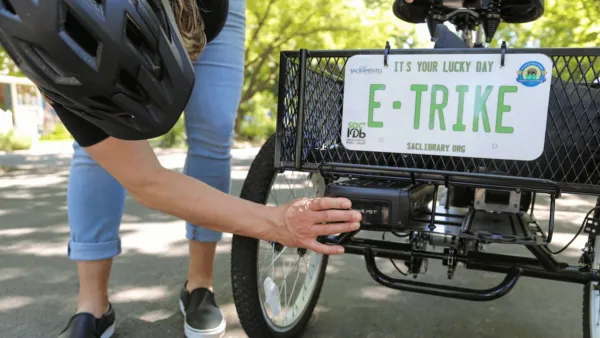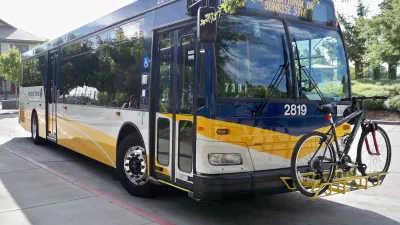Located in California's fertile Central Valley, Sacramento is ideally situated to integrate local farming into its urban fabric.
Traci Knight reports on a recently approved ordinance in the city of Sacramento that "makes specific changes to allow and promote urban agriculture and micro farms within city limits."
Here Knight describes the details of the ordinance:
"The new ordinance will allow micro farms to voluntarily enter into a contract with the city, which will reduce property taxes for sites with urban agriculture. It also allows for utilitarian farm structures such as hoop houses, out buildings, greenhouses, and farm stands. Urban agriculture includes but is not limited to community gardens, market and direct sale gardens, aquaponics, hydroponics, beekeeping and edible landscaping. The city already allows limited animal husbandry, which will not be affected by the ordinance. The ordinance incentivizes urban agriculture on vacant lots."
The ordinance also allows the sale of farm goods on residential properties.
According to Knight, the ordinance is the result of advocacy by groups such as Ubuntu Green and a coalition of top local chefs. All of these dynamics indicate noteworthy momentum for the urban agriculture movement in Sacramento. "Advocates used the City of Sacramento’s attempt to rebrand itself as the farm-to-fork capital of the U.S. as leverage, urging council members to build upon the recently passed California Urban Agriculture Incentive Zones Act and the California Homemade Food Act, which permits cottage food operations."
FULL STORY: Urban Farming Ramps Up in Sacramento with Passage of New Ordinance

Planetizen Federal Action Tracker
A weekly monitor of how Trump’s orders and actions are impacting planners and planning in America.

Map: Where Senate Republicans Want to Sell Your Public Lands
For public land advocates, the Senate Republicans’ proposal to sell millions of acres of public land in the West is “the biggest fight of their careers.”

Restaurant Patios Were a Pandemic Win — Why Were They so Hard to Keep?
Social distancing requirements and changes in travel patterns prompted cities to pilot new uses for street and sidewalk space. Then it got complicated.

Platform Pilsner: Vancouver Transit Agency Releases... a Beer?
TransLink will receive a portion of every sale of the four-pack.

Toronto Weighs Cheaper Transit, Parking Hikes for Major Events
Special event rates would take effect during large festivals, sports games and concerts to ‘discourage driving, manage congestion and free up space for transit.”

Berlin to Consider Car-Free Zone Larger Than Manhattan
The area bound by the 22-mile Ringbahn would still allow 12 uses of a private automobile per year per person, and several other exemptions.
Urban Design for Planners 1: Software Tools
This six-course series explores essential urban design concepts using open source software and equips planners with the tools they need to participate fully in the urban design process.
Planning for Universal Design
Learn the tools for implementing Universal Design in planning regulations.
Heyer Gruel & Associates PA
JM Goldson LLC
Custer County Colorado
City of Camden Redevelopment Agency
City of Astoria
Transportation Research & Education Center (TREC) at Portland State University
Camden Redevelopment Agency
City of Claremont
Municipality of Princeton (NJ)





























